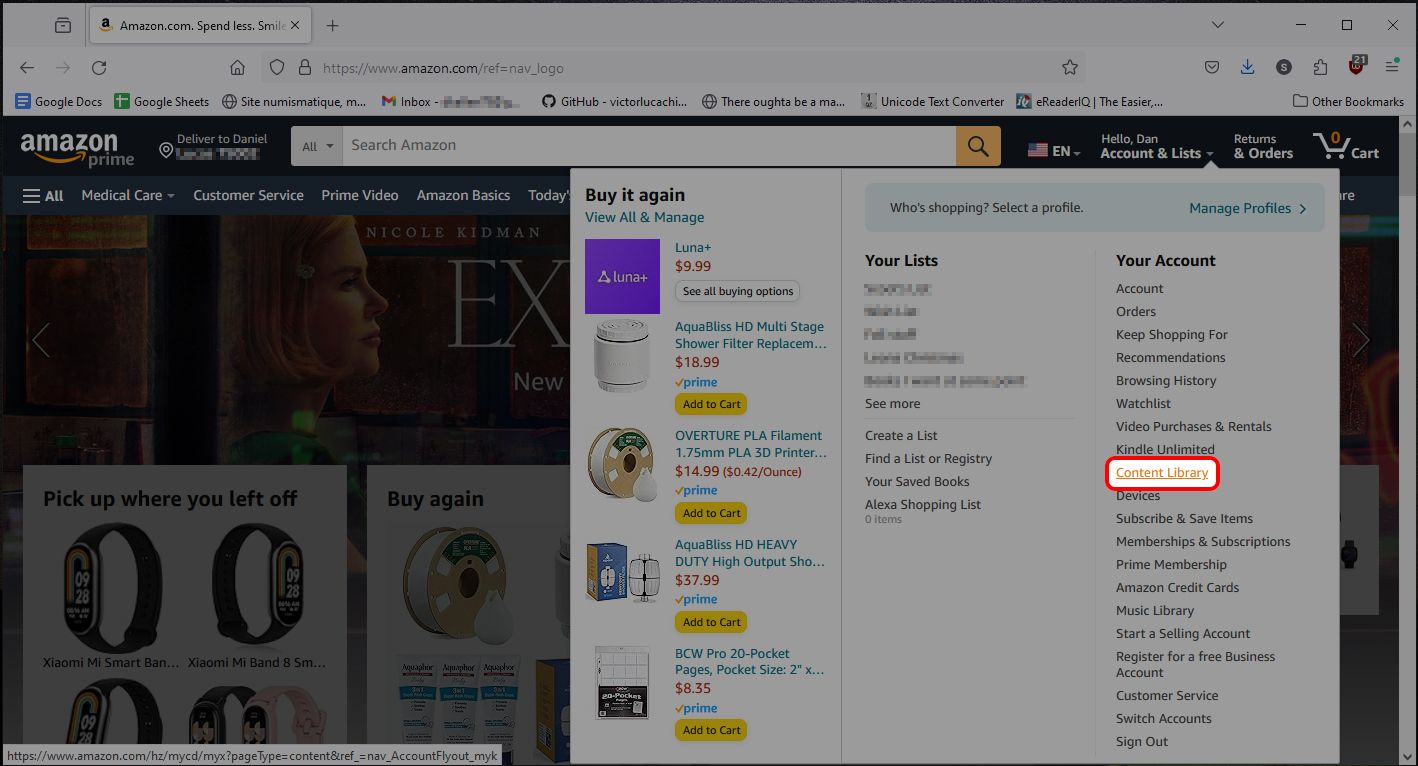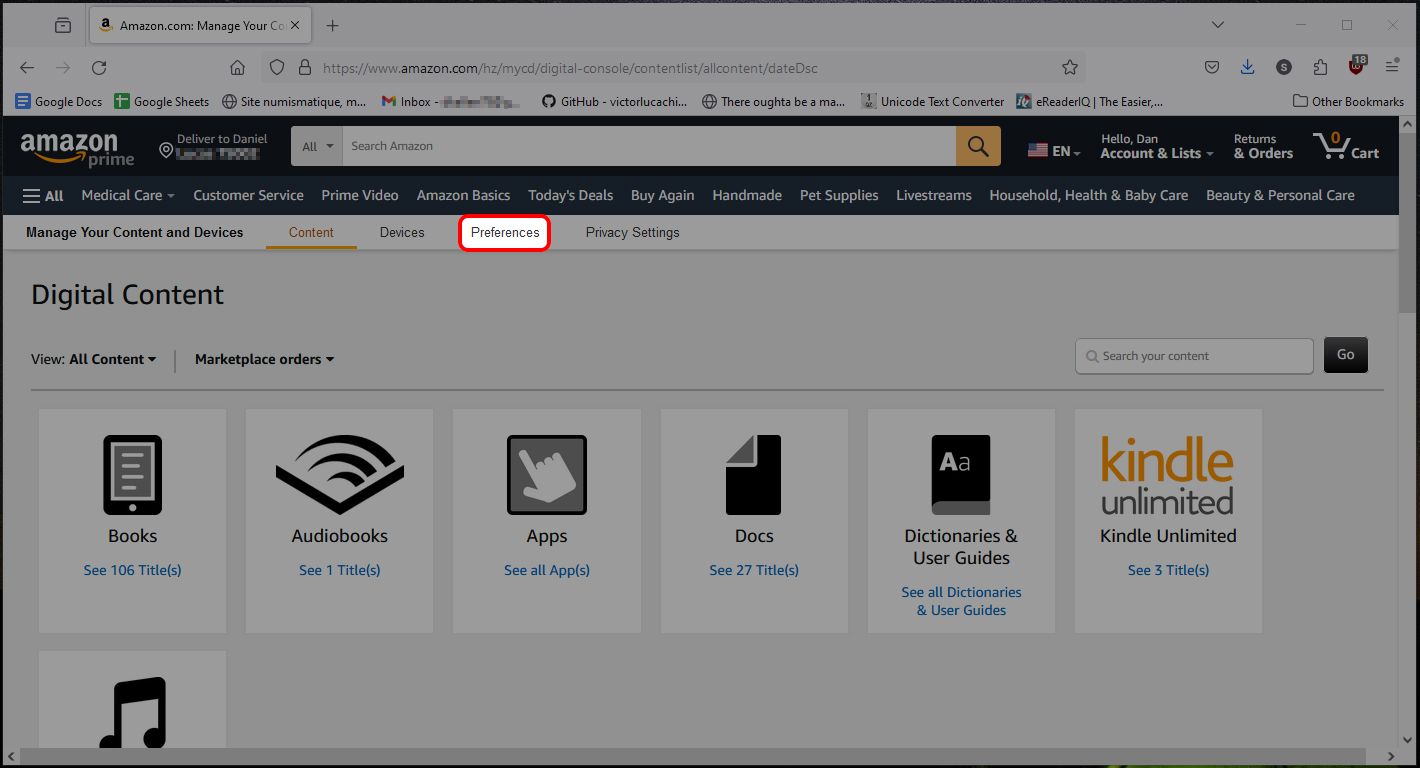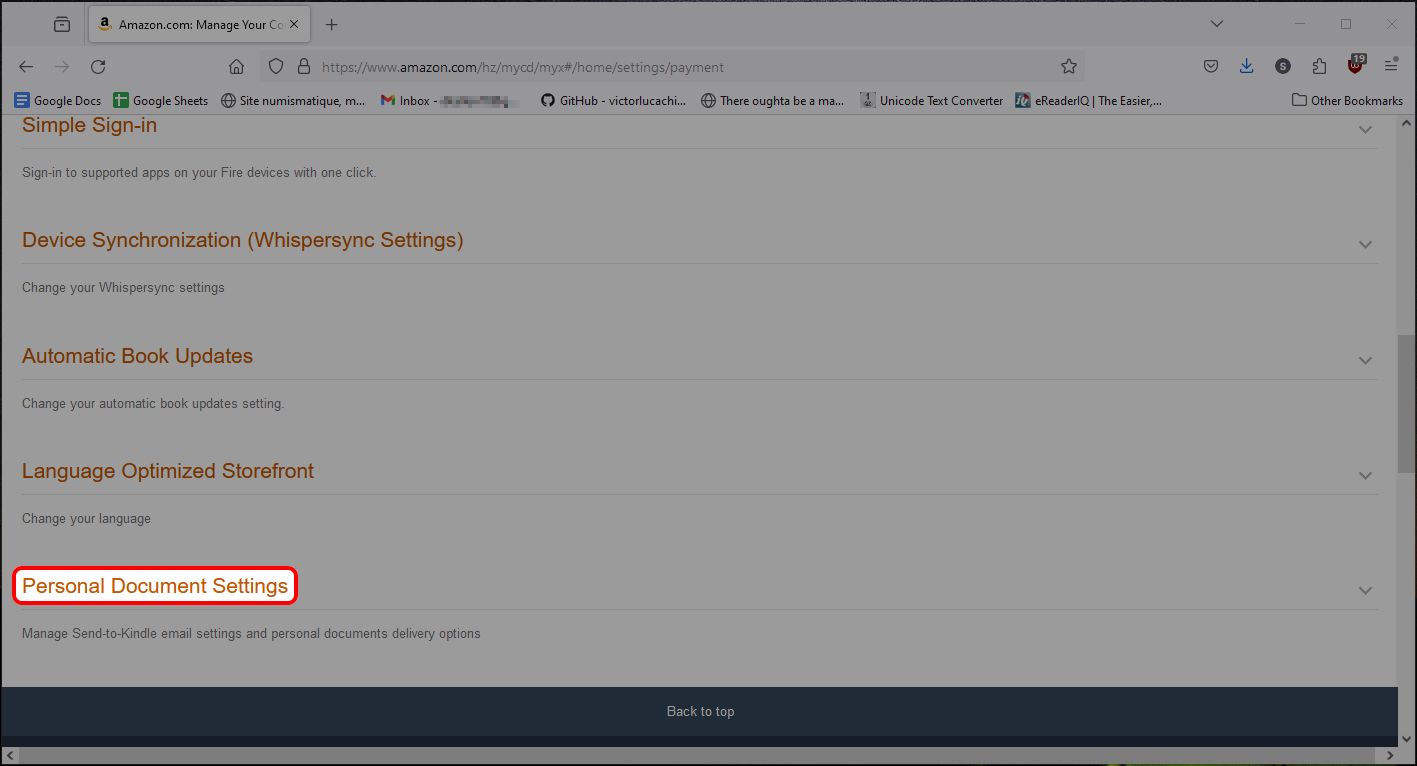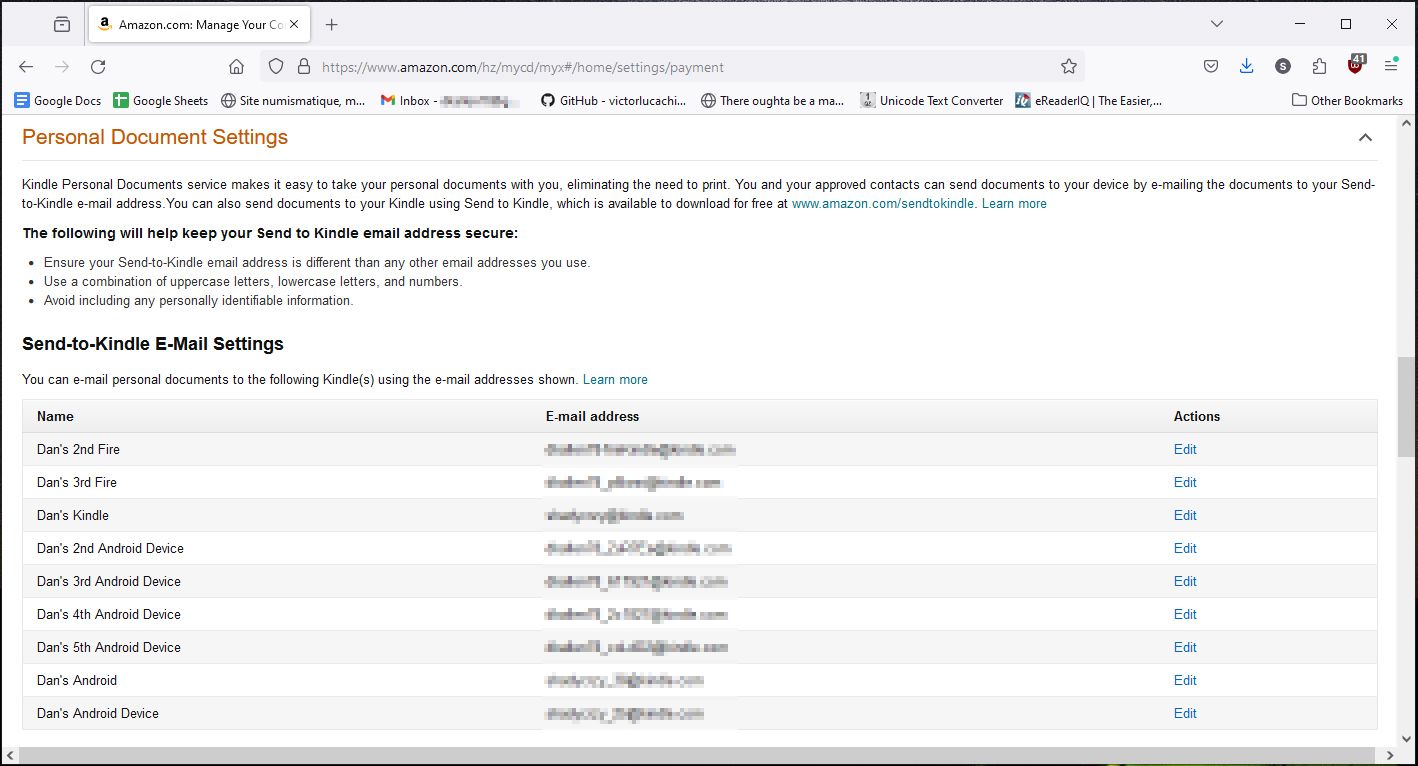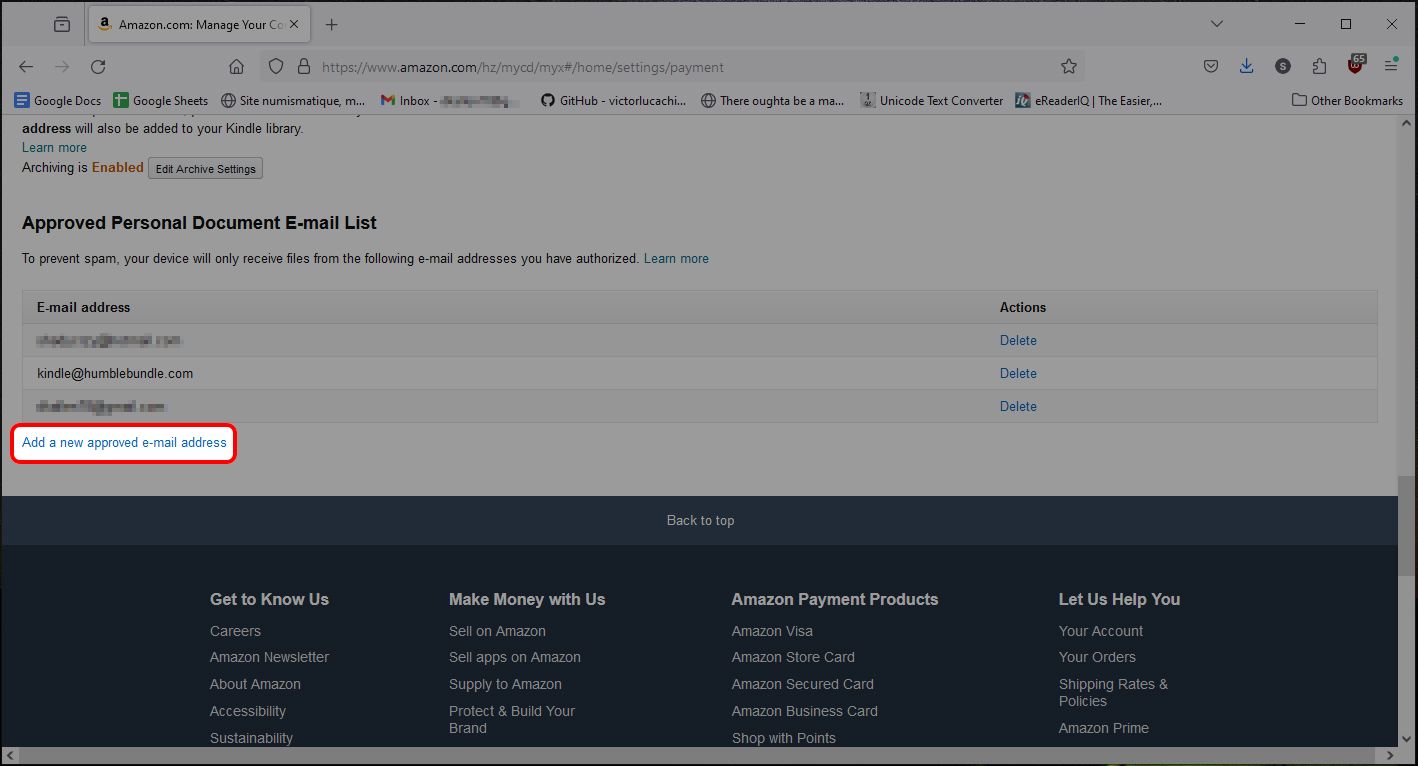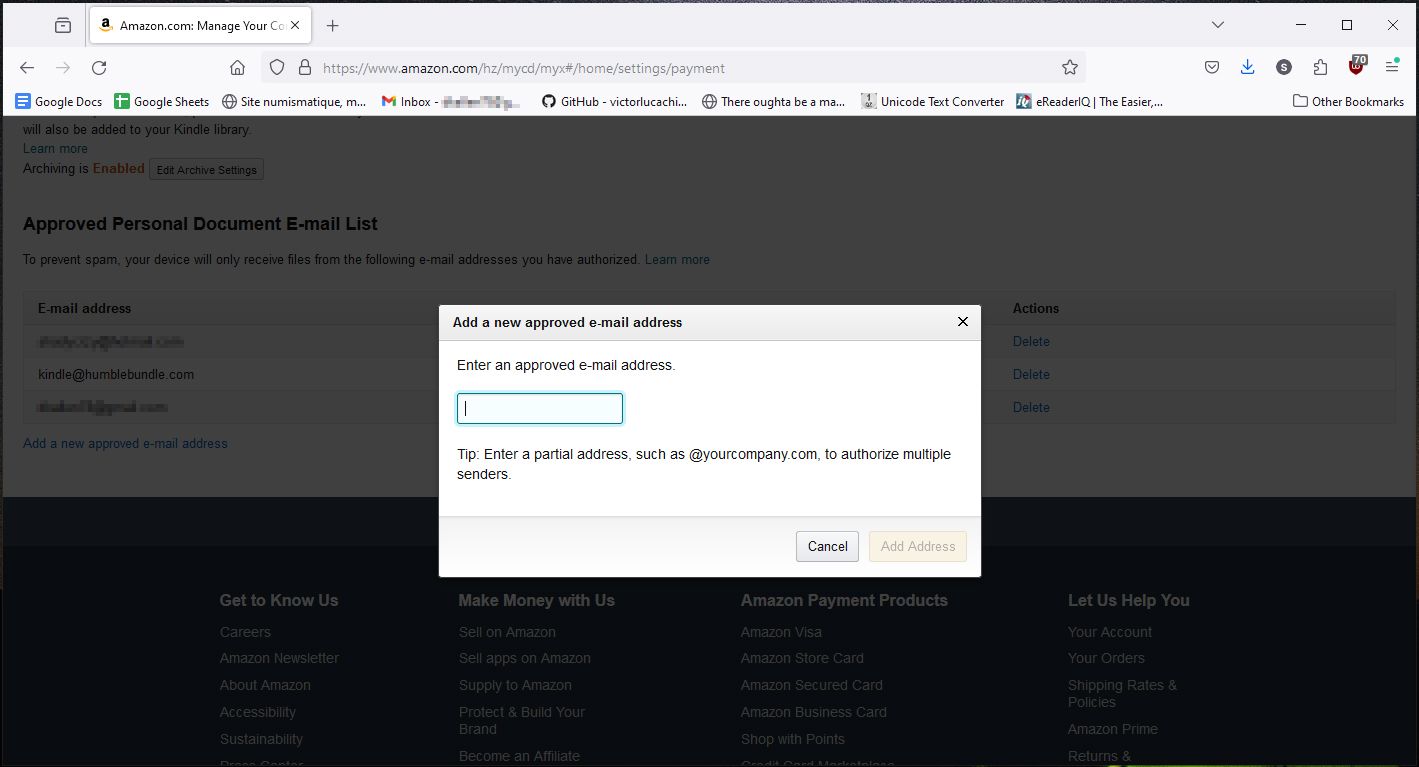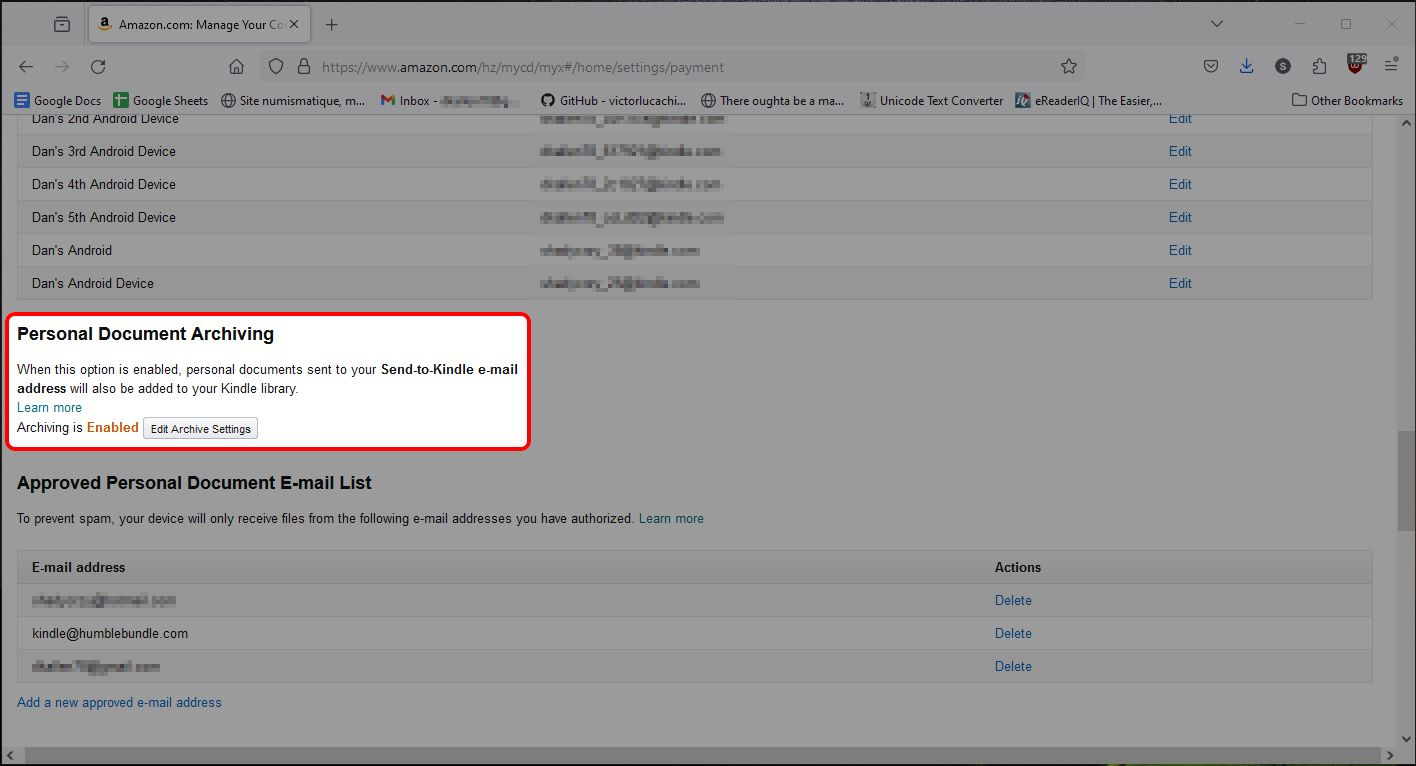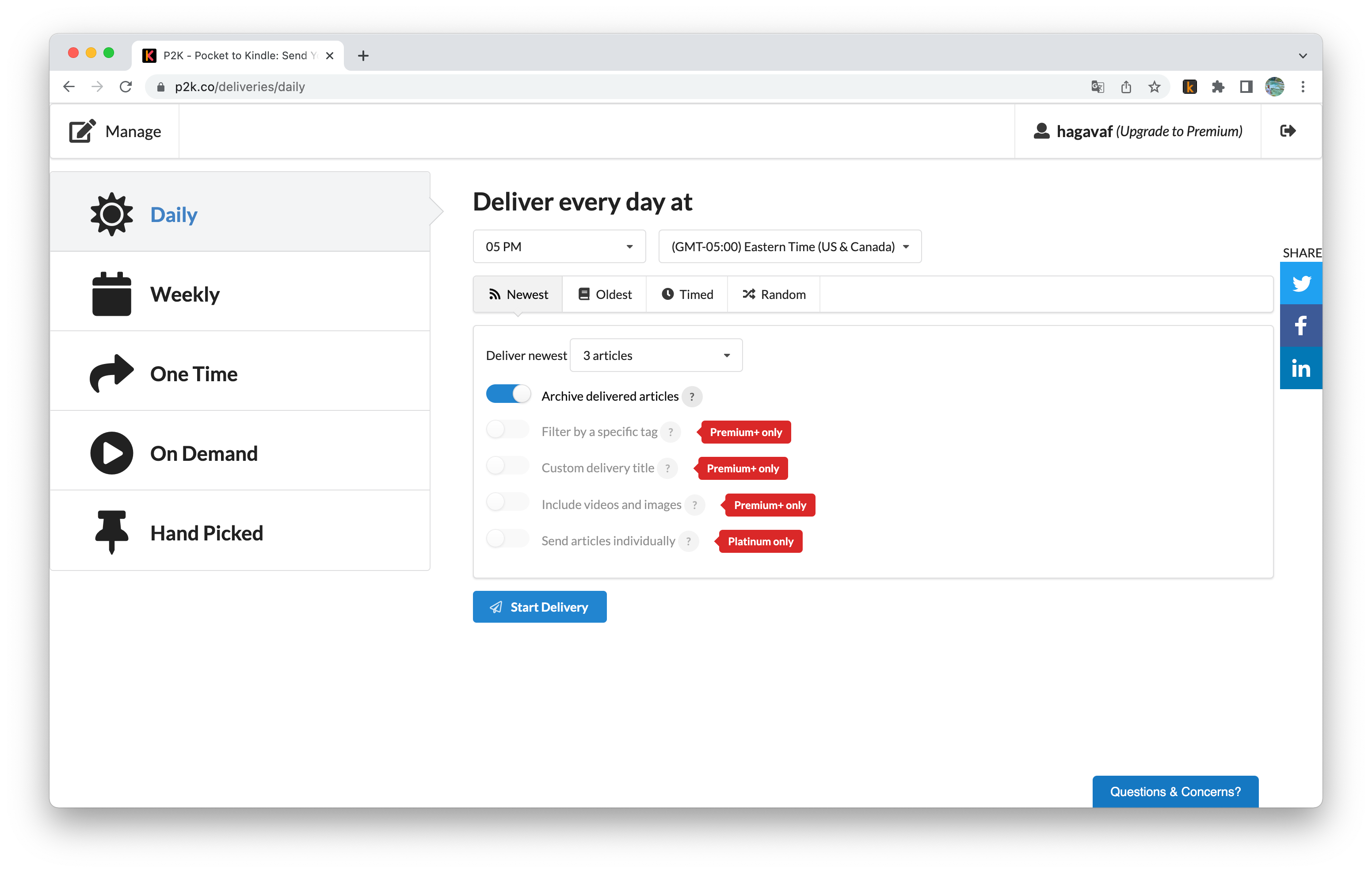Phones and tablets aren’t the best tools for reading articles online. Many flagships use OLED displays, which may cause eye strain when used for too long. A better alternative is a high-quality e-reader built with E Ink technology, which illuminates its display using ambient light.
Not all devices send web content to your e-reader the same way. On Android-based e-readers like Boox and Meebook, you’ll install an app from the Play Store to handle it. Kobo e-readers are preloaded with Pocket, which makes sending web content to your device quick and easy. Kindles require extra steps. Here’s how to transfer content to your Kindle, with tips on choosing one that works best for you.
Prerequisite: Set up your Kindle account to receive documents
Before you can send web articles to your Kindle, you must set up your Amazon account so that it accepts incoming documents.
- Log in to Amazon, hover over Account & Lists, and click Content Library.
- Near the top of the screen, select Preferences.
- Scroll to the bottom of the screen and click Personal Document Settings.
- Find the device you want to send articles to and note its associated email address.
- Scroll down the Approved Personal Document E-mail List and select Add a new approved e-mail address.
- Enter the email address you wish to receive articles and documents from. If you use one of the services recommended in this article, add kindle@fivefilters.org, @ktool.io, or delivery@p2k.co.
If you receive a validation when sending articles to your Kindle, the email address for your Kindle may not be random enough. Go to your Kindle preferences and change it to something unique with special characters.
One last option on this page you can fiddle with is Personal Document Archiving. It can be modified at any time and impacts how your documents are handled:
- When the setting is enabled, sending a document to your Kindle address adds it to your Kindle library. It is available across all devices, including your phone or tablet. You can also delete it from any of these devices, which removes it from all your Kindle devices, including the Kindle apps on your phone, tablet, and computer.
- When the setting is disabled, the document is only available on the Kindle you send it to. This option doesn’t require an internet connection to delete an article. However, you can’t start reading something on your Kindle and finish it on another device.
You’re done setting up your Kindle account to receive documents and articles. Let’s see how to feed it some long reads that aren’t books.
Ktool is one of the most complete solutions for sending content to your Kindle. You can send a link or a document to convert it into a Kindle document using the Quick Send feature from the website or app. You can also ask it to queue content and compile it into a magazine that can be sent daily or weekly. An innovative feature is the ability to subscribe to RSS feeds through Ktool and have it compile content into a magazine or send it directly. Plus, you can share an article to your Kindle using the Android app.
- Download the Send to Kindle app from the Google Play Store or the App Store.
- Create an account.
- Enter your Kindle email address, the one you customized with random characters a bit earlier.
- By default, Ktool sends content to your e-reader individually. If you prefer your articles to be delivered in magazines, go to Settings and change the default action.
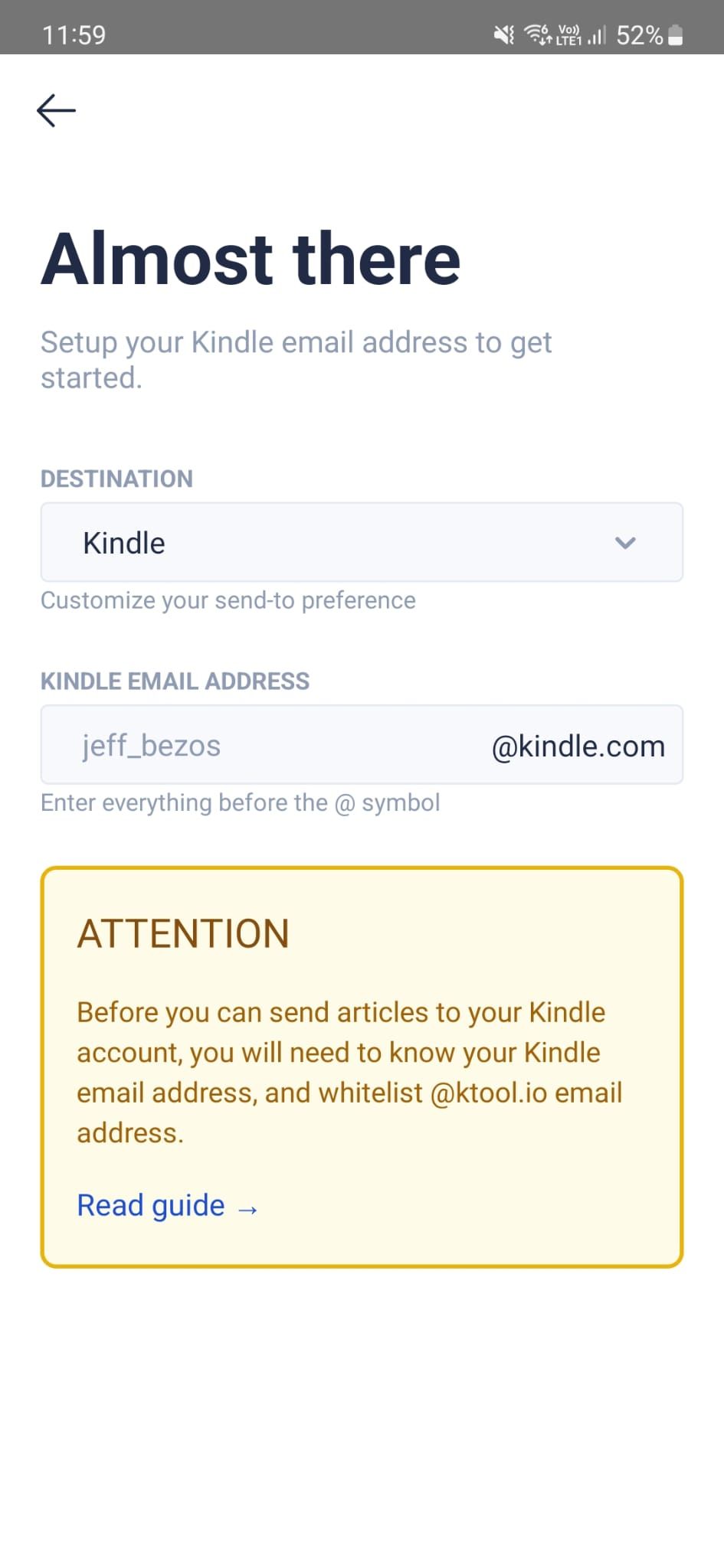
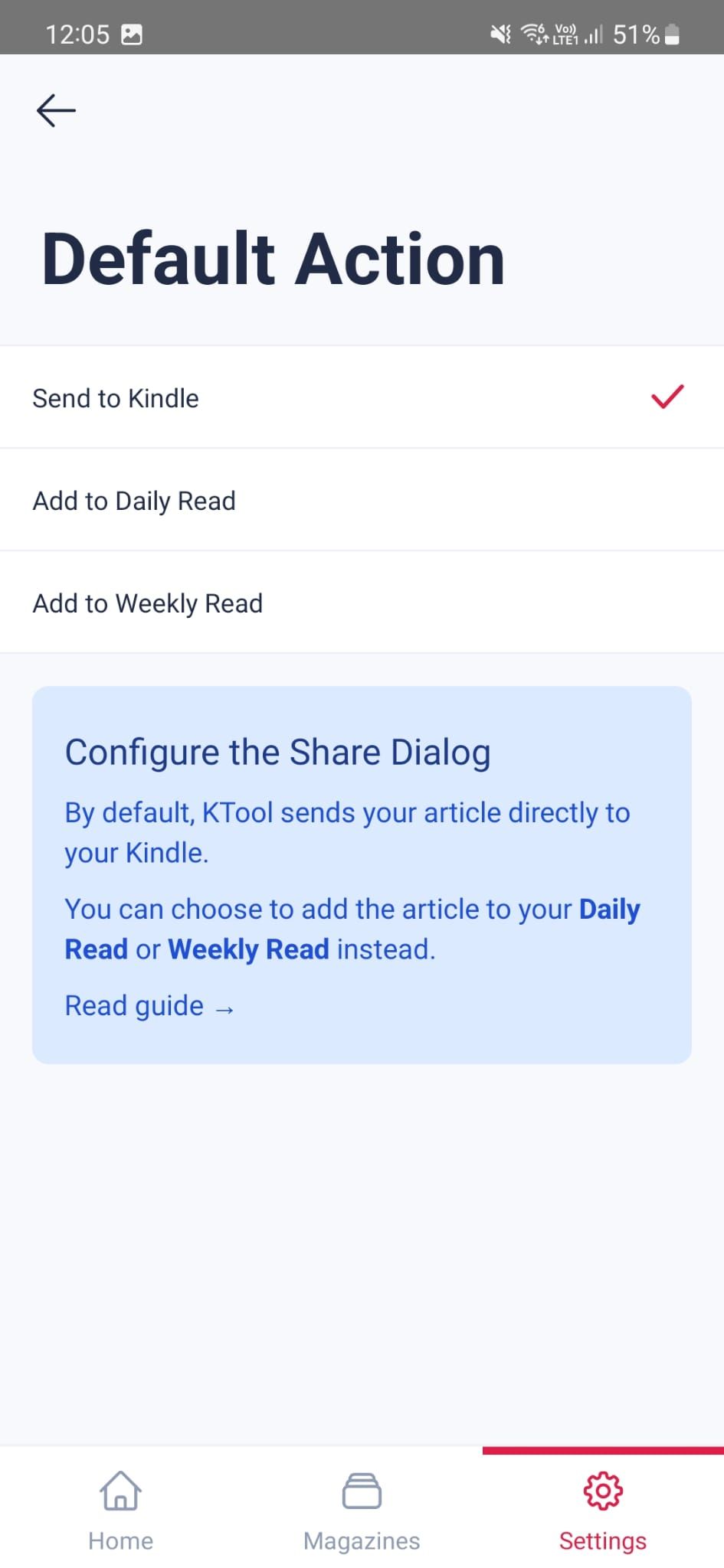
- To send articles to your Kindle, tap the Share button in the app you want to send the article from and select Ktool.
- Give the article a name and select Send to Kindle.
The Ktool app may not be at the top of the Share menu. Tap and hold it to pin it to the top of the Share menu, making it easier to find the next time you want to send a post to your Kindle.
Ktool has
browser extensions
, allowing you to send articles from your computer with just a click.
Send to Kindle by KTools offers a lot of features. A basic membership costs $36 a year or $5 a month. It allows you to send unlimited articles to your Kindle, use the QR code tool, gives you access to the browser extension, and retains your data for 30 days.
A premium membership li will set you back $48 per year or $7 a month. It includes all the features in the basic tier, custom digests and magazines, an ADHD mode, and unlimited newsletter subscriptions.
If you’re willing to pay $10 a month or $72 a year, Send to Kindle by KTools platinum subscription adds downloadable EPUBS, full-text search, and unlimited data retention to the mix.
Push to Kindle: Send articles and documents in one click
Push to Kindle is the simplest method of sending articles to your Kindle. It works using an Android app called Push to Kindle. It’s easy to set up and works like a charm, both on your Android device and your phone. You can use an app to send anything to your Kindle using your Android or iOS device’s Share menu. You can also use a web browser extension for Firefox or Google Chrome or a bookmarklet for Safari that does the same on your computer.
You can send any article or blog post to your Kindle and Push to Kindle takes care of the formatting. It’s good at removing ads while keeping images in the post, making sending and reading content a pleasant experience.
- Download the Push to Kindle app on your Android device.
- Open Push to Kindle and navigate to Settings.
- Go to Send to > Kindle Email.
- Enter the Kindle email address you set up and tap Done.
- To send an article to your Kindle, open the Share menu and select Push to Kindle, regardless of which app you use. The article is sent to your Kindle within a few minutes.
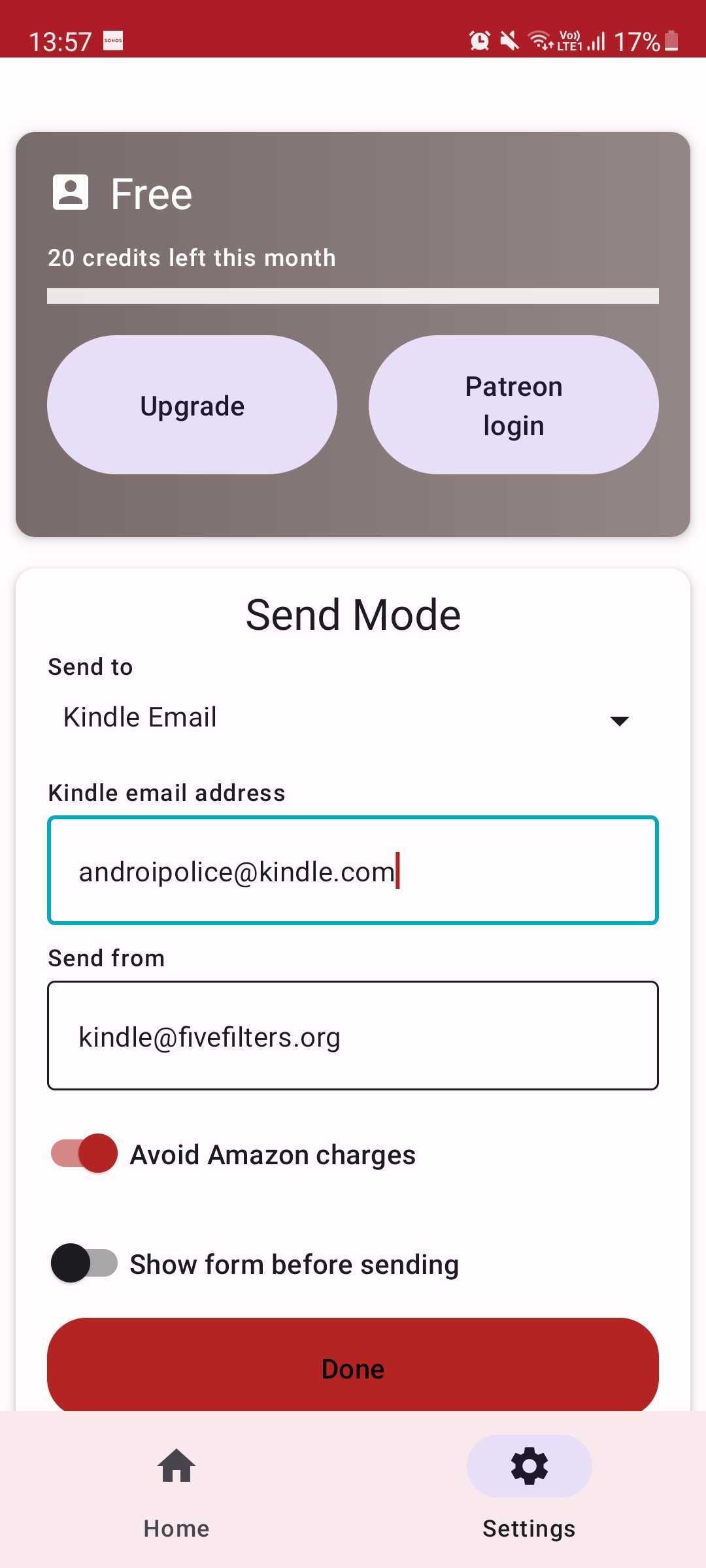
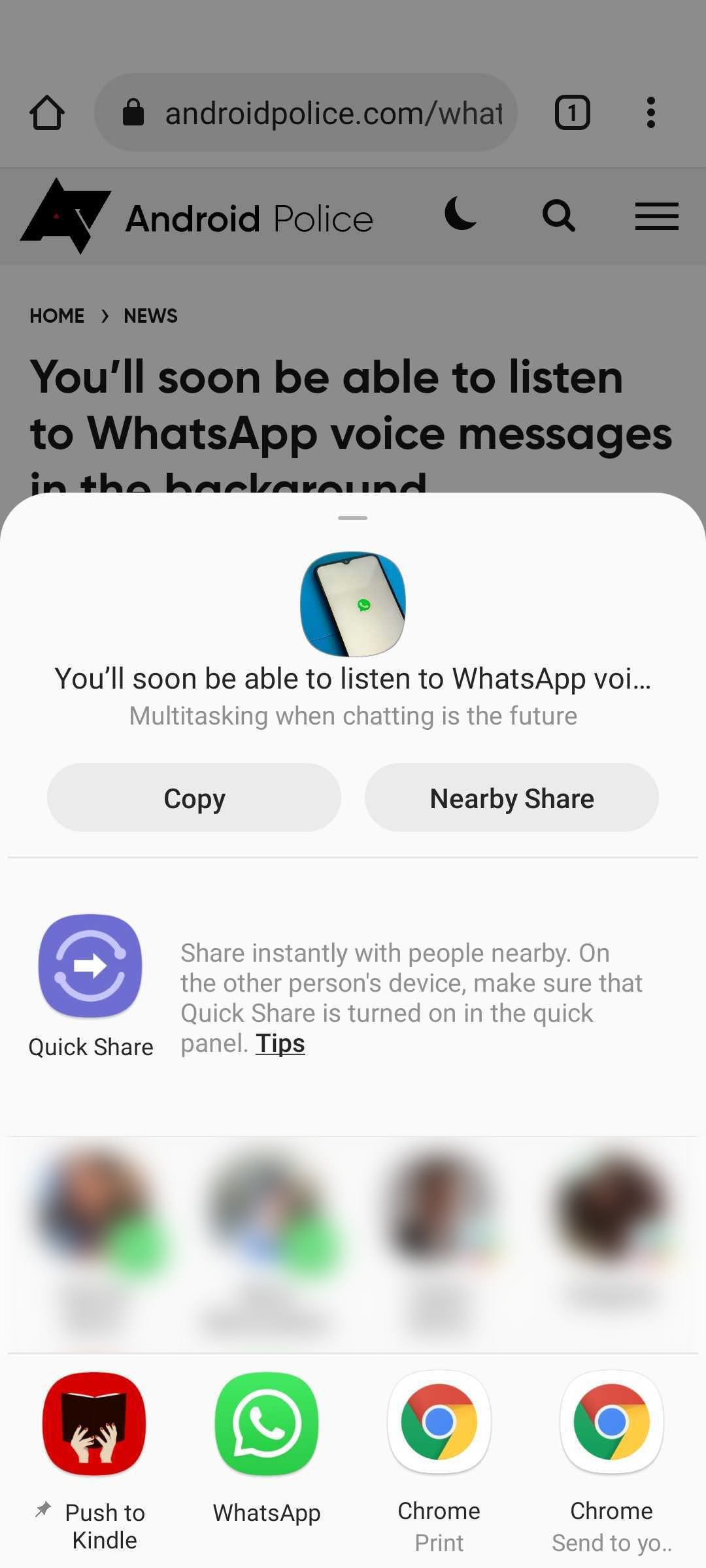
If the Push to Kindle app isn’t at the top of the Share menu, tap and hold it to pin it to the top of the Share menu. It will be easy to find the next time you want to send a post to your Kindle.
You can achieve the same process from any other device by downloading the appropriate browser extension, setting up a bookmarklet, or emailing a link to your Push to Kindle address. The latter is the same as your Kindle address, just replace @kindle.com with @pushtokindle.com. Sending a link to your regular @kindle.com address will not work.
Send posts by connecting the Push to Kindle app with the Kindle app on your phone. You don’t have to set up an email address before this. However, it involves two apps to send an article to your Kindle and makes it harder to email links to your Kindle without using the app.
There isn’t a catch for a third-party service to work efficiently. Still, the service is only free if you send less than 10 articles per month to your Kindle. When you reach this threshold, you must sign up for a paid subscription that costs $5 a month or $36 a year. The service is worth it if you read many articles on your Kindle, and it saves time compared to the second method explained below.
Amazon’s Send to Kindle: Free but finicky
Amazon has official apps and browser extensions that let you send content to your Kindle. Let’s start with the Chrome extension, which is easy to set up and does the same as Push to Kindle, meaning it sends a distraction-free version of the article to Kindle. There are no costs associated with it.
You can only do this on a desktop browser. The app does not support sending an article from your phone. It only allows you to send documents, so save the article before sending it. While this is troublesome, it works fine as long as you don’t mind the extra steps.
- Open the article in a browser.
- Tap the Menu icon and select Share > Print > Save as PDF.
- Save the file on your phone.
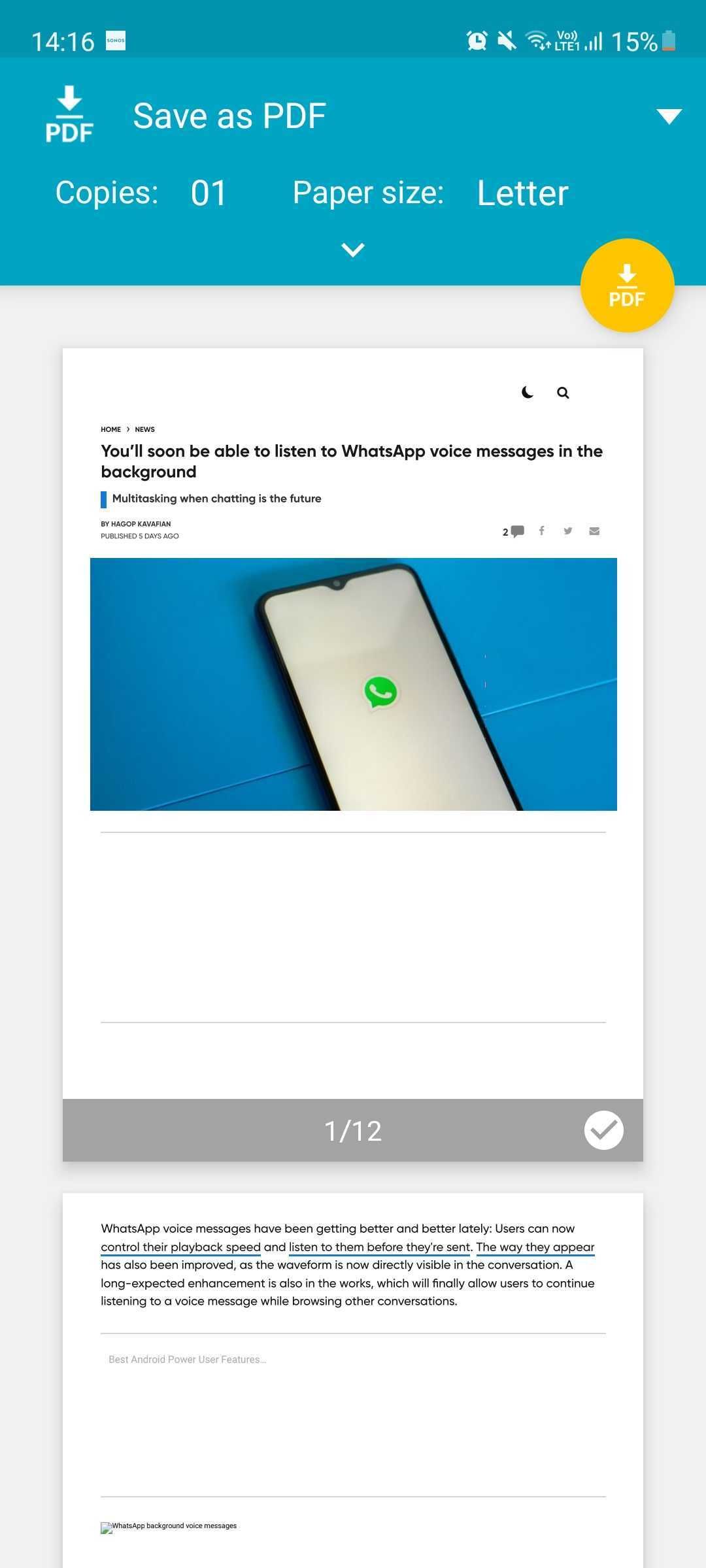
- If you have several articles to send, repeat the above steps until all your articles have been saved.
- Send the PDF files as attachments to your @kindle.com address and type Convert in the subject line. This ensures Amazon converts the PDF files to Kindle format (.azw), allowing you to read it like a regular Kindle book.
You can also open the PDF file, select the
Menu
icon, and select
Share
>
Kindle
to send the article to your Kindle. This option doesn’t convert it to the Amazon file format.
This method is free, but only convenient if you send articles from your computer. Otherwise, you’ll spend a lot of time converting and sending each article, which Push to Kindle does in a split second.
P2K: Keeping your Kindle in sync with Pocket
Unlike Kobo readers, Kindles don’t offer support for Pocket. However, you can keep your reading list and articles in sync using a third-party service called P2K. It’s customizable and lets you decide how articles should be delivered to your Kindle.
You can schedule ad-hoc, daily, weekly, or automatic deliveries. There’s a free membership tier that allows you to send a limited number of articles, but you do not have access to customization options. The Premium and Platinum subscriptions, which cost $3 and $5 per month, lift most or all these limitations.
The free version only sends a single file to your Kindle every day or week, called “Your P2K articles [date].” This e-book contains a table of contents with the various articles you sent. Your deliveries are capped at five per week, with a maximum of ten articles for each delivery.
The Premium subscription lifts these limits and lets you customize delivery titles but doesn’t sync articles as they’re added. To do this, you’ll need the Platinum membership to sync items individually and in real time, meaning that when you add an article to Pocket, it lands on your Kindle within a few minutes and appears as an individual item.
Regardless of your plan, each article has links that let you Archive or Favorite the item in Pocket from your Kindle, provided the latter is connected to Wi-Fi.
Now that you know how P2K works, here’s how to set it up:
- Navigate to the P2 K website and click Get started to log in with your Pocket account.
- Enter your email address and pick the right plan for your needs. You can try the free plan before paying.
- Click Create a Recurring Delivery to set up how your Pocket articles will be sent to your Kindle.
- Select how often articles should be sent to your Kindle.
- If you have a Platinum membership, select On Demand.
- If you don’t want all articles to be sent to your Kindle or don’t have a Platinum plan, filter whether you want the newest or oldest articles in your Pocket reading list to be sent first.
- If you sync your devices, uncheck Archive delivered articles, as you can archive them from your Kindle.
- Choose how many articles to send at once. They will be grouped in batches of one, three, five, or ten articles with a generic file name.
- For Premium members, additional options let you limit articles sent to the ones with specific tags. It’s also best to include images to make your articles more complete.
- After customizing how articles should be sent, click Start Delivery. You’re prompted to add a personal email address to your Kindle preferences, which you may have done in the configuration steps.
- Enter the Kindle email address you set up and select Start Delivering Now.
Articles land on your Kindle momentarily. When reading them on your Kindle, you’ll see the Archive and Favorite links at the bottom of every article. These allow you to archive or favorite the article in your Pocket library without using another device. You must manually delete it from your Kindle if you don’t want it on there. If you archive an article using the Pocket app, it doesn’t remove it from your Kindle, and you’ll need to delete it manually.
This method is only useful if you use Pocket for a specific reason or bought a new Kindle and want to transfer your Pocket library. Otherwise, stick to the first two methods and replace the Pocket app with the Kindle app. It lets you read articles and books on your phone, tablet, computer, and reader while keeping everything in sync at no extra cost.
Make it easy on your eyes
The reading experience on E Ink is superior in almost every way to your phone’s display, especially for saving your eyes from undue strain. Sending content to your Kindle can be tricky, so use the method that clicks with you and start reading on your e-reader.
Source link

